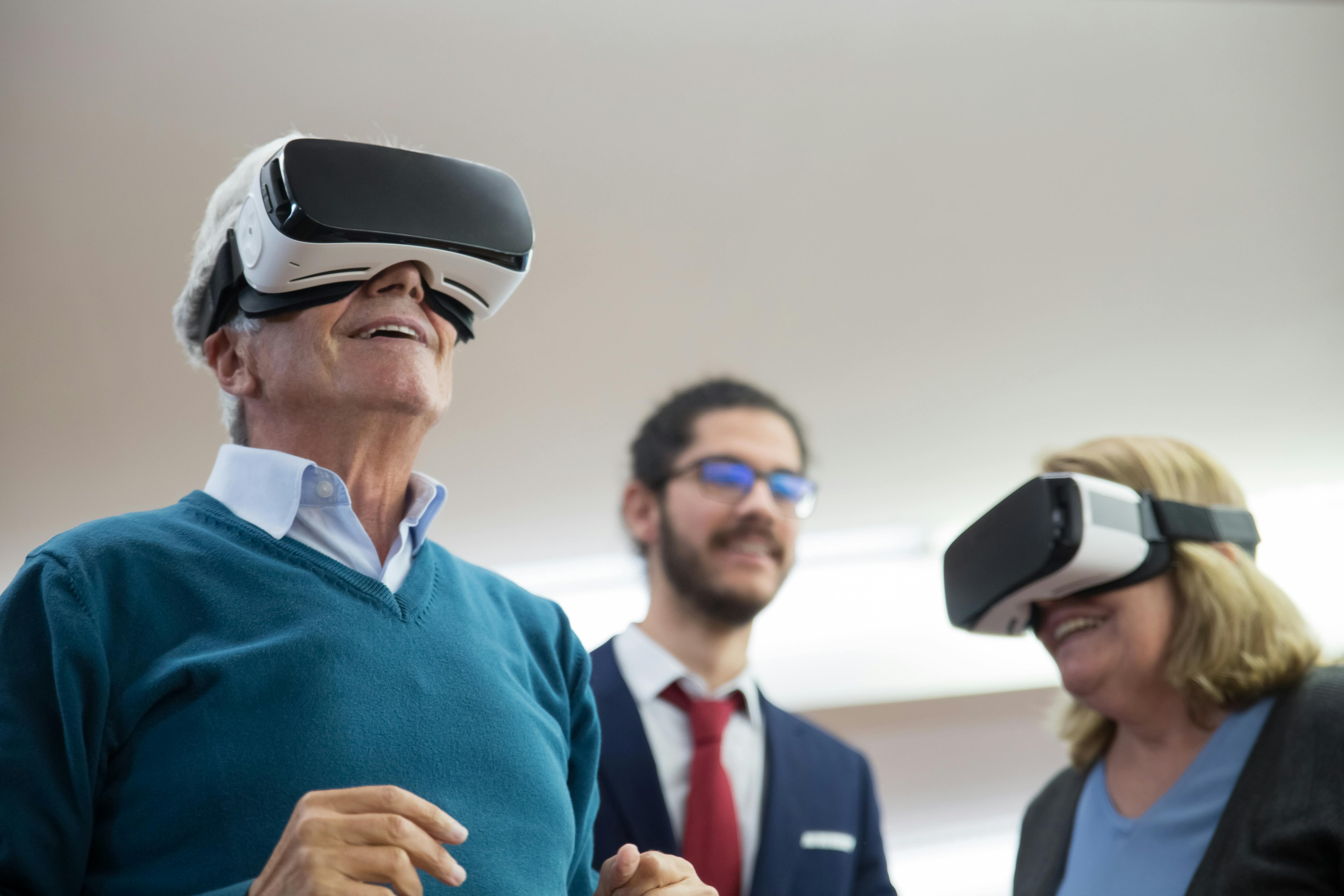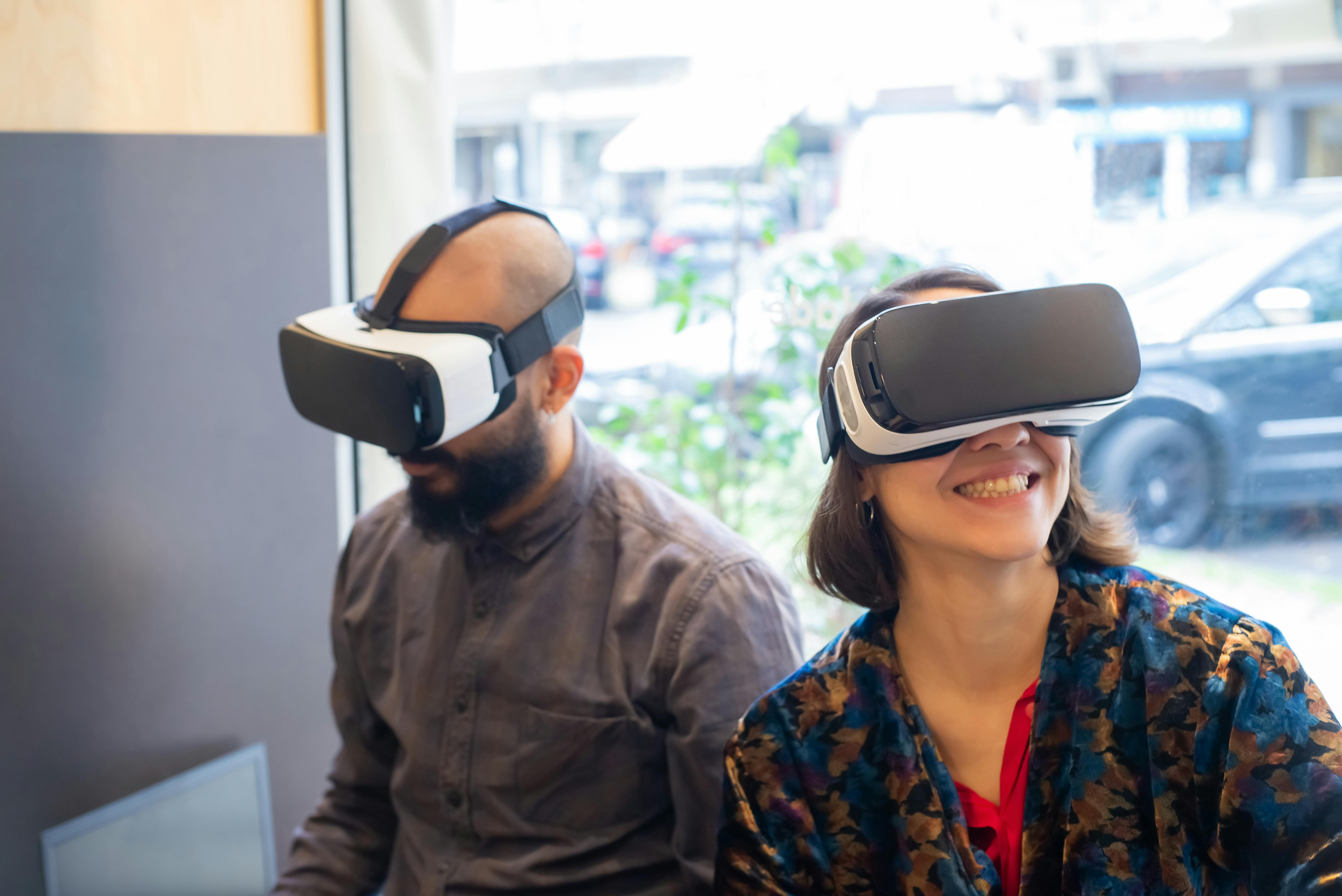VR Training in High-Risk Industries: From Simulation to Application
Oct 14, 2024
VR training is redefining preparation in high-risk industries such as healthcare and construction, where the margin for error is slim and the consequences can be severe. Traditional training methods often fall short in replicating the high-stakes environments that workers face daily.
This comprehensive guide explores how VR training provides immersive, realistic simulations that enhance learning outcomes, improve safety, and reduce the risk of errors—all without exposing trainees to real-world dangers.
Understanding VR Training
Virtual Reality training involves the use of VR technology to create a simulated environment that mimics real-life scenarios. Trainees can interact with this virtual world using VR headsets and other sensory equipment, which provides a controlled yet highly realistic experience. This method is particularly effective in industries where practical, hands-on experience is crucial but difficult or dangerous to practice in reality.
The Benefits of VR Training in High-Risk Industries
Enhanced Safety
The primary advantage of VR training in high-risk industries is the significant enhancement of safety. Trainees can experience dangerous scenarios without the real-world risk, allowing them to make mistakes and learn from them in a safe environment. This exposure prepares them for actual situations they will face on the job, reducing the likelihood of accidents and injuries.
Improved Performance and Skill Acquisition
VR training accelerates skill acquisition because it allows for repeated practice in lifelike scenarios. In healthcare, for example, medical professionals can perform complex surgical procedures multiple times in VR, honing their skills without the need for physical resources.
Similarly, construction workers can practice operating heavy machinery in a variety of simulated weather conditions and job site layouts, ensuring they are well-prepared for any situation they might encounter.
Cost-Effectiveness
While the initial investment in VR technology can be significant, the long-term savings are substantial. VR reduces the need for physical materials, machinery, and space required for traditional training. Additionally, it minimizes the costs associated with training-related accidents and errors, such as damage to equipment and downtime.
Scalability and Customizability
VR programs can be easily scaled and customized to fit different training needs. Once a VR training module is developed, it can be deployed across multiple locations and to an unlimited number of trainees. Each module can also be tailored to address specific skills or scenarios, providing a personalized training experience that is directly aligned with the needs of the industry and individual learners.
Implementing VR Training in Healthcare and Construction
Healthcare Industry
In healthcare, VR training is revolutionizing medical education and ongoing professional development. Medical students and professionals use VR to practice surgical procedures, emergency response, and patient interaction. This not only improves their technical skills but also enhances their decision-making abilities and bedside manner—crucial components of quality healthcare provision.
Construction Industry
For the construction sector, VR training focuses on operational proficiency, safety protocols, and situational awareness. Workers can practice in various virtual construction sites that simulate potential hazards and environmental challenges. This training is invaluable for improving safety compliance and operational efficiency on actual construction sites.
Challenges and Considerations
While VR training offers numerous benefits, there are challenges to its implementation:
Technology Cost: The initial setup cost for high-quality VR equipment and software development can be high.
Technology Adoption: Some trainees and trainers may require time to adapt to VR technology, necessitating additional training and adjustment periods.
Content Development: Developing high-quality, realistic VR training content that accurately simulates real-world scenarios is time-consuming and requires expert knowledge.
Future of VR Training
The future of VR training in high-risk industries is promising. As technology advances, the realism and interactivity of VR training programs will continue to improve, making them even more effective and engaging. Additionally, the integration of Artificial Intelligence (AI) could lead to adaptive learning environments that customize training scenarios based on a user’s performance in real-time.
Conclusion
VR training is transforming the landscape of professional education in high-risk industries by providing safe, effective, and cost-efficient training solutions. It offers an innovative approach to preparing healthcare and construction professionals for the challenges of their respective fields, enhancing safety and performance through realistic, immersive simulations.
As VR technology continues to evolve, its role in training and development is set to become even more integral, promising a new era of preparedness and proficiency in high-risk sectors.





